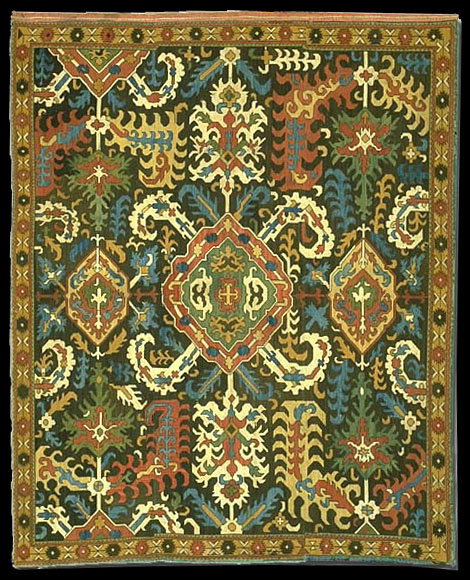|
Early Azerbaijan textile, 18th century, Shirvan or Karabagh, Textile Museum,
2.18. Cotton (cross stitch on resist-dyed blue cotton), silk, 152 X 125 cm.
|
|
Surviving examples of Caucasian embroidered
textiles date from the 18th century and later, but they represent a much
longer tradition. The motifs are similar to those found in better known
Caucasian rugs and flatweaves that were made for export. It has been
suggested that rug weavers may have copied the designs of these
embroidered textiles and incorporated them into their design repertoire.
These colorful textiles of the Caucasus region were a domestic art made
for home use and local commerce, and their strong colors and patterns
reflect the ethnic and regional diversity of the Caucasus.
This textile is actually made of three panels, sewn together after the
embroidery was complete. The cotton plain weave background has been
embroidered with silk thread in cross stitch.
The Textile Museum 2.18
Acquired by George Hewitt Myers in 1952
60 x 48 in
|


.jpg)
.jpg)

